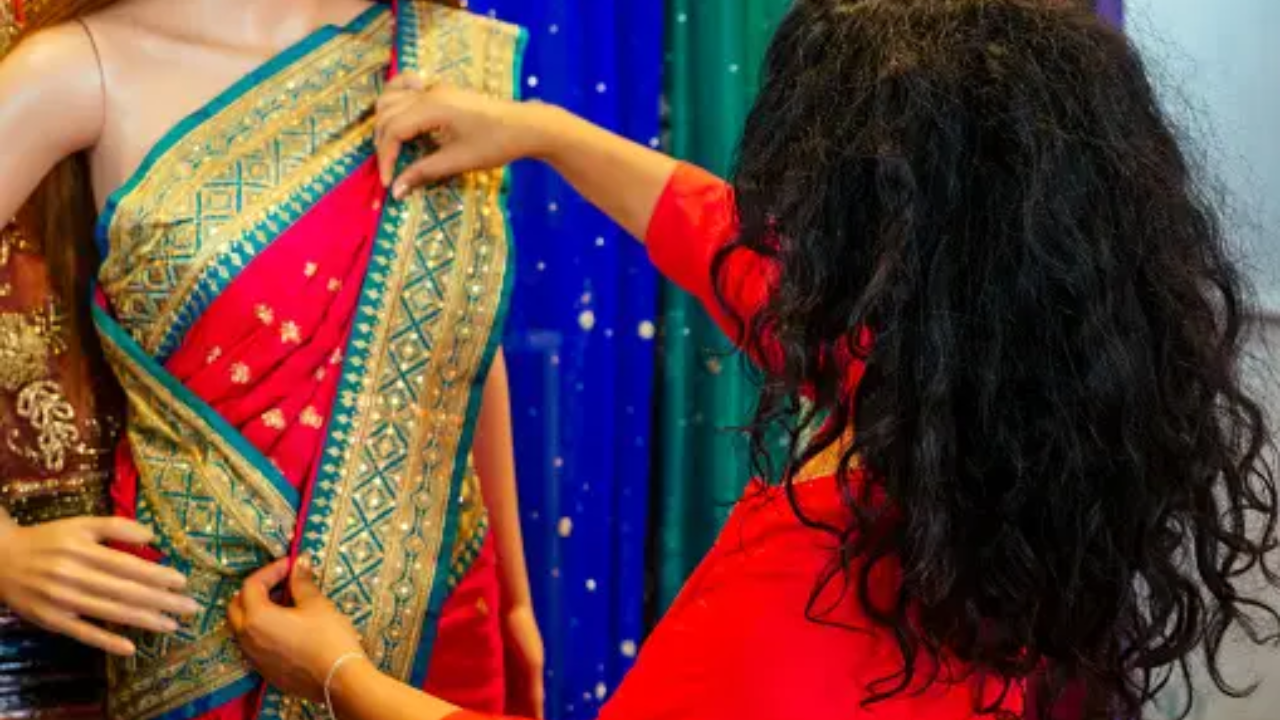
Authentic fabric from Karnataka. Image credit: Unsplash
Known as the “garment capital” of India, Karnataka It is a centre of historical and cultural importance in India. Karnataka’s silk and cotton agriculture contributes to the textile The state’s prowess. Karnataka is known for its traditional silk weaving, it is the largest producer of Mulbary silk in the country, exporting around 65% of the country’s silk. With saris and weaving styles dating back centuries, you will find authentic handloom weavers here as well as power looms. Karnataka is a pioneer in modern textiles as one of the first MSK Mills was established in Kalburgi in 1885, and today Karnataka is the world’s largest spinning unit at a single plant which is M/S Himatsingkasiede with 2.11 lakh spindles. 20% of Indian garments are manufactured in Karnataka. Here is a list of famous textiles from Karnataka and where they belong.
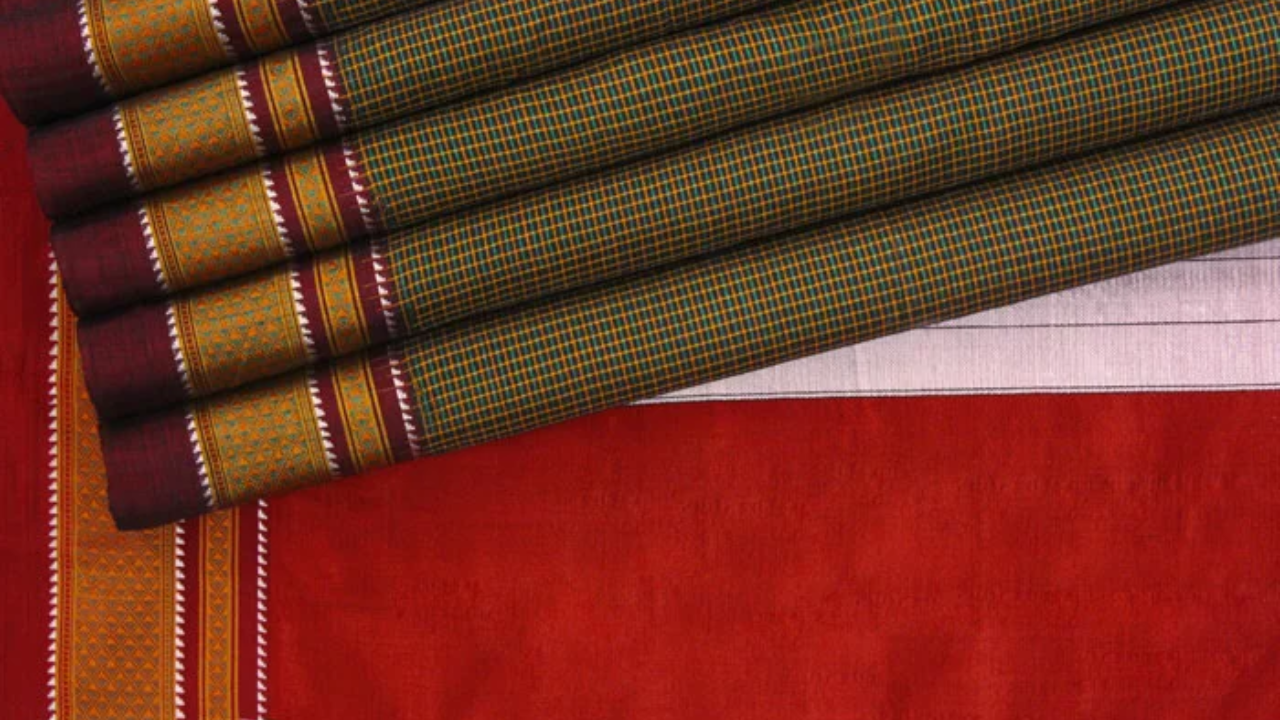
Ikal sari from Bagalkot district
Bagalkot has been a weaving hub since the 8th century and gives this traditional saree its name ‘Ilkal’. It is mostly worn in North Karnataka and what distinguishes it from other sarees is that the pallu and the body of the saree are woven separately. The saree is then worn together with a series of loops in a wrapping technique called Topi Teni which is practiced exclusively in Ilkal. They are made using cotton, silk and artificial silk thread or a combination of them. Famous for the beautiful white temple patterns and red base pallu, these sarees come in different lengths and allow women to wrap the saree on their heads.
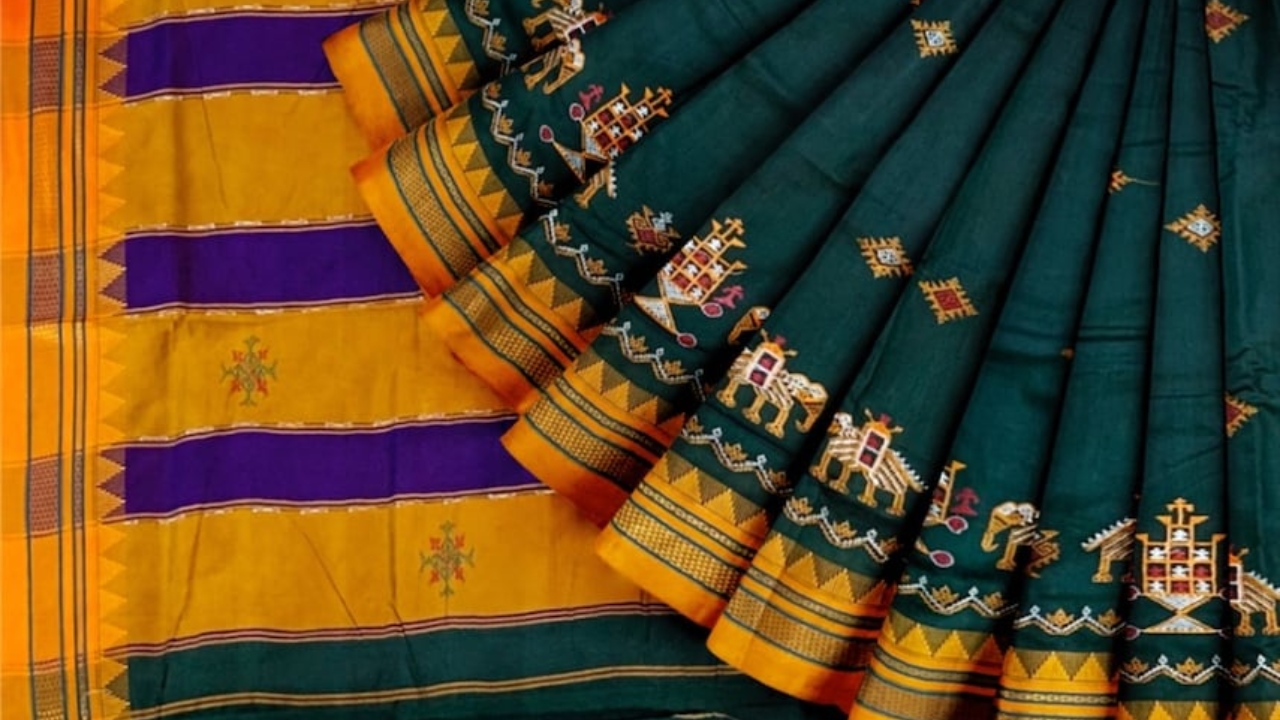
Sari Kasuti, Hubli
The term comes from the two words Kai and Suti, meaning hand and cotton respectively, which basically indicates that this saree has intricate hand embroidery done using cotton threads. It comes from the Chaluka dynasty and is believed to have evolved between the 6th and 12th centuries. Known for its symmetrical stitches and knots, this was widely practiced in the Dharwad district and is commonly done on ilka sarees and Khana blouses. These embroidered patterns are done directly on the fabric rather than traced, there are 4 types of stitches like gavanthi, murgi, negi and menthi. These designs are inspired by the rangolis.
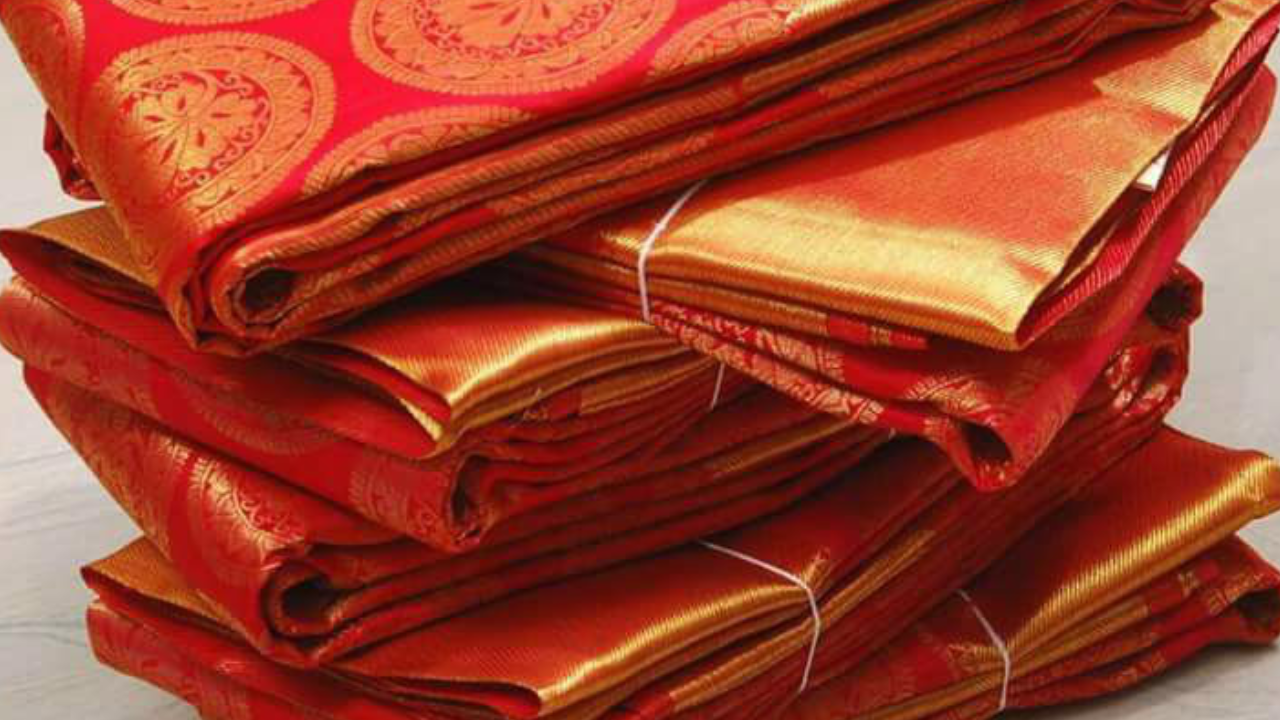
Sari Molakalmuru, Molakalmuru
This saree, made in Molakalmuru, Chitradurga district, is known for its distinctive design of Butta (motifs), golden zari and texture. These sarees are durable and are woven using the three shuttle techniques which give the pallu a contrasting colour to the body. It is common to find swans, arrows, lotuses, peacocks and gandaberunda (two-headed bird) as motifs on this saree. These sarees are durable and have a strong weave as they are woven using double-lined and twisted silk threads. Weavers from Melkote, Saurastra and Andhra Pradesh settled here years ago, effectively making it a hub of weavers.
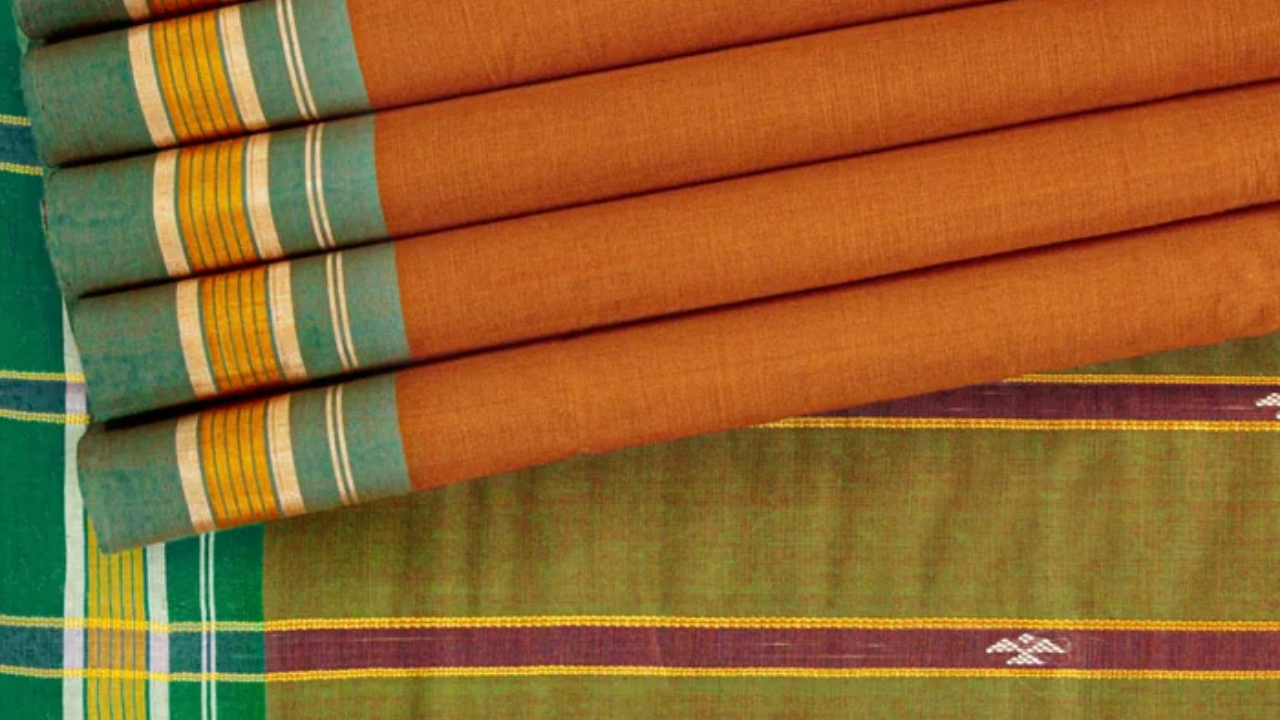
Udupi Cotton Sarees, Udupi
Known for their bright and contrasting pallu, these sarees are made from cotton threads that have finer counts. They are usually 80” and 60” count and are made using Malabar frame looms that were introduced by the Basel Mission in the 1840s. These sarees gained popularity in the liberation movement as they are traditionally Indian and were boycotting western products to further isolate westerners from earning more income from the population. They are eco-friendly and have a unique method that includes the application of rice starch and Maixe in the weaving process. This is done to strengthen the thread and prevent it from breaking, it also gives them a brighter look!
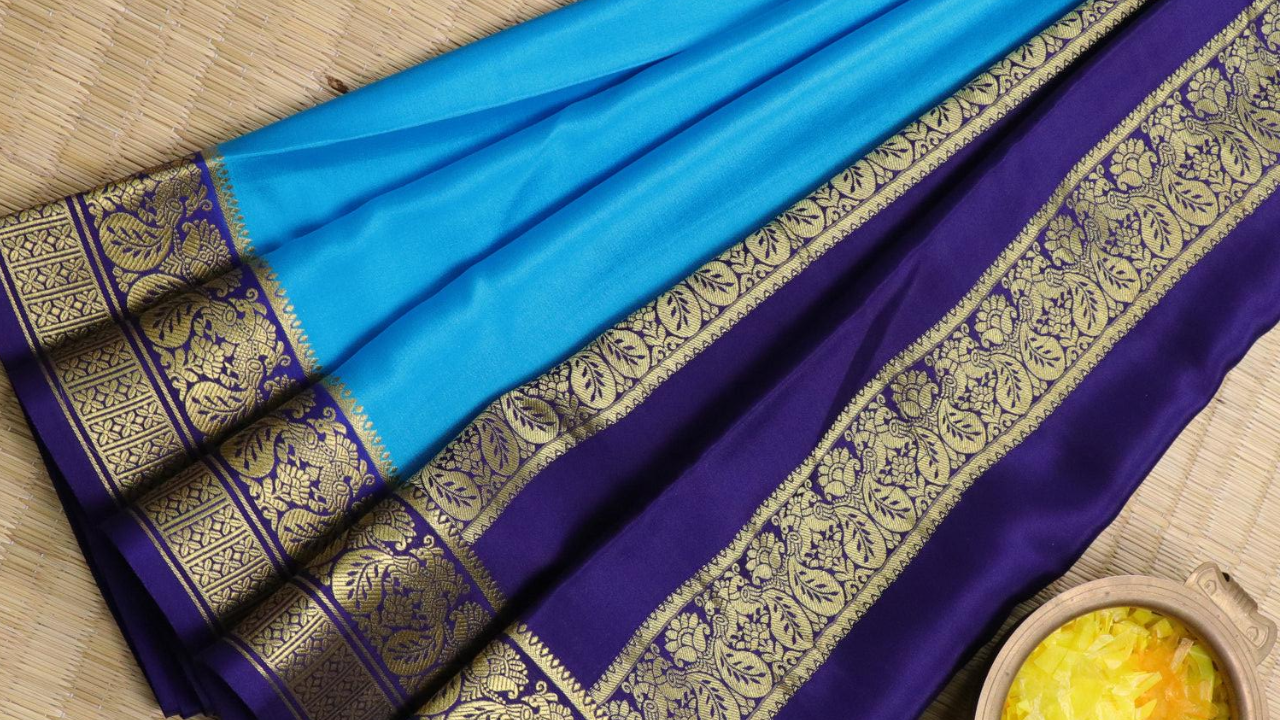
Mysore Silk Saree, Mysore
These sarees are known for their beautiful colours, qualities, shine and elegance. Known as one of the most expensive sarees, they are made from 100% silk and even the zari contains 65% pure silver and 0.65% gold. They even come in 2 varieties – crepe de chine and georgette. These also have another unique quality – being produced solely by Karnataka Silk Industries Corporation Ltd (KSIC) as it holds the patent for their production. Initially, these were worn by royalty and as ornamental fabrics for the armed forces.
Disclaimer:
The information contained in this post is for general information purposes only. We make no representations or warranties of any kind, express or implied, about the completeness, accuracy, reliability, suitability or availability with respect to the website or the information, products, services, or related graphics contained on the post for any purpose.
We respect the intellectual property rights of content creators. If you are the owner of any material featured on our website and have concerns about its use, please contact us. We are committed to addressing any copyright issues promptly and will remove any material within 2 days of receiving a request from the rightful owner.
